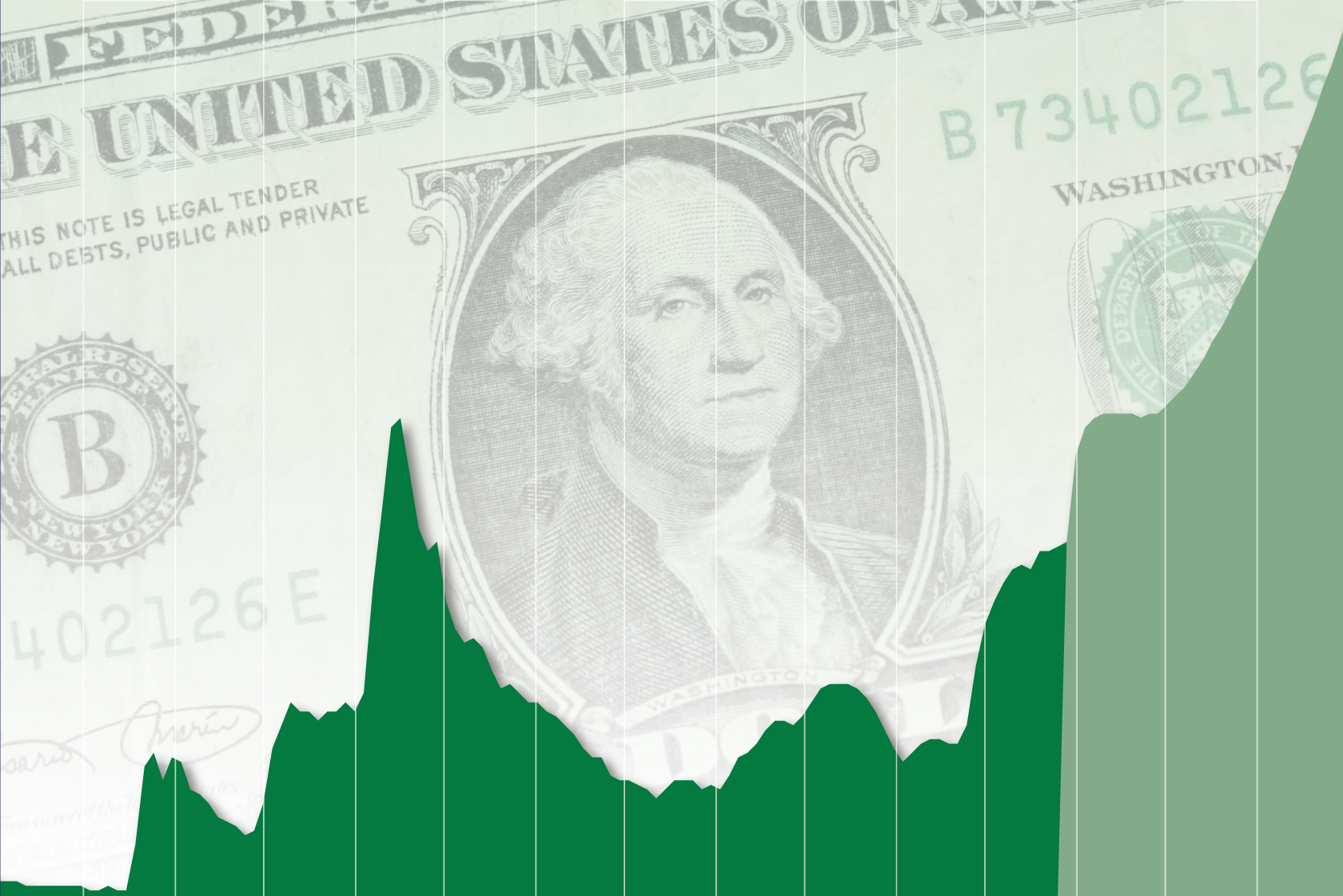The Nation’s Unsustainable Fiscal Trajectory
How much federal debt is held by the public – past, present and future?
Debt held by the public is the total amount of money the federal government owes its investors. We compare projections of debt (what’s owed) to gross domestic product, or GDP (what’s earned), to show debt relative to the size of the economy supporting it. OUR Annual Report on the country’s financial health, published in May 2023, presents our latest projections.
At the end of fiscal year 2022, federal debt held by the public was approximately 97% of GDP.
The federal deficit in fiscal year 2022 was down 50% from fiscal year 2021 to $1.4 trillion, but it was still the fourth-largest deficit in U.S. history. The decline is attributable to higher tax revenues and lower federal spending due to the COVID-19 pandemic. You can find out more about the current financial situation here.
Why is this happening?
The underlying conditions driving this unsustainable fiscal outlook existed long before the pandemic. In every fiscal year since 2002, the federal government has run a deficit, that is, its expenditures exceed its revenues, and has increased its debt. Going forward, spending, including for Social Security, Medicare/Medicaid, and net interest on debt, is expected to continue to outpace income by increasing amounts.
Demographic and other trends, such as rising health care costs, are putting pressure on the decline of Social Security and Medicare trust funds. Higher interest rates could also combine with growing debt to increase deficits in the future.
Find out more in our annual report:
What is the solution ?
Congress should develop a long-term fiscal plan to provide a cohesive picture of the government’s fiscal goals and a roadmap for achieving them. A budget plan could include an assessment of the drivers of deficits, both revenue and expenditure, and alternative approaches to the debt ceiling. For example, the debt limit could be set as part of the budget resolution or the Treasury could be authorized to propose a change in the debt limit that would go into effect without needing congressional approval.
How does GAO help?
Tax simulation over 75 years: We update this simulation annually to monitor the government’s long-term fiscal outlook. We also analyze the drivers of debt and the social and other trends that contribute to it. Find details in our annual report.
Debt Sensitivity Analysis: This analysis can give policymakers a more complete picture of how potential economic and fiscal changes to our assumptions about the variables in our simulation may affect the fiscal outlook. You can explore the effects of different variables on debt in our interactive chart.
Budget Gap Sensitivity Analysis: The fiscal gap is a way to quantify the policy changes needed to achieve a given target debt ratio. It measures the extent to which primary deficits need to be reduced by policy changes (a combination of revenue increases or spending cuts) over a given period. Explore the variables that influence the tax gap in our interactive tax gap calculator.


